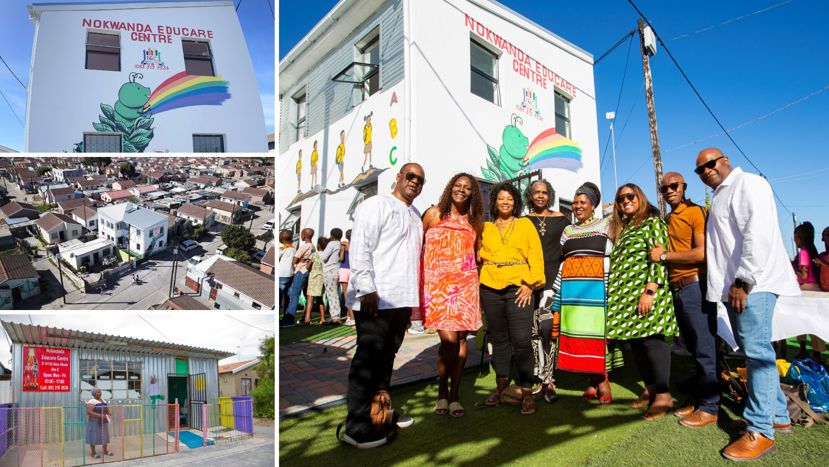Community Impact
The Will To Help Others Leads The Way To A New School


Ten years in the making, a dream becomes a reality for Craig Jones, Director of Government Business Development. In 2013, Craig along with his wife, Michelle, and a group of six friends went on vacation in South Africa. They were moved not only by the natural beauty of the country but also by the lack of resources for many and extreme poverty where some live on as little as 83 dollars a year.
While there, the group visited several educational facilities in the Cape Town informal township of Khayelitsha to deliver school supplies. Seventy-five percent of the estimated 2.4 million people in Khayelitsha live in tin shacks and 73 percent have not completed grade 12.
"South Africa is a juxtaposition of extremes. Within Cape Town is the impoverished township of Khayelitsha with a high density of tin shanty homes. Ten miles away is wine country with beautiful open spaces and an abundance of wealth." - Craig Jones, Director, Government Business Development
Where there is great need there is also great opportunity. The friends saw this in a Créche (Early Childhood Development Center) they visited Nokwanda Educare Centre. The school like many of the dwellings was made of corrugated tin and lacked proper bathrooms and a proper kitchen. The friends were impressed by the director/teacher who had a disciplined approach to education and was doing much for the children with very little. She was committed to early childhood education in an area where 70 percent of the children do not receive it. Like her, the group believed that providing a safe, nurturing school for the youngest children would provide an opportunity to change the trajectory of their lives.
Meeting the Challenge
After returning to the U.S., the group formed a 501 c3, Project YES Africa (www.projectyesafrica.org), began building the infrastructure of the organization, and then kicked off a fundraising campaign. By 2015 they were in the planning stages for a new facility to replace the tin building used by the Nokwanda Educare Centre. A local architect was hired to design a 1,600 sq. ft, two-story building. The group chose an alternative building method, sandbag insulation, to combat some of the environmental challenges for the area. The sandbags keep the building cool in the summer and warm in the winter and are fire resistant. Fire is a significant problem for the high-density tin dwellings that often use hijacked electricity and are crudely constructed. The sandbags also provide a safer learning environment since they are bulletproof.
Due to COVID-19, the start of construction was delayed two years to July 1, 2022. The organization employed 20 local people to construct the building. Three craftsmen were hired for paintings, security gates and window metal work, and landscaping. The school was completed in April of this year and has three classrooms, two handicap-accessible bathrooms and a kitchen, a sick bay, and an office. Three certified teachers have joined the original director to educate 60 children ages three to seven. Before the school's completion, the organization worked with local ex-pats in Cape Town to provide regular food drops to supplement the children’s food security needs.
What's Next For Project YES Africa?
The foundation is working to supply new desks and supplies for the Nokwanda Educare Center along with facilitating additional and sustainable resources from the Western Cape Education Department. They are also working with the education department to identify additional Créches that meet the foundation's criteria for assistance.
To learn more, please visit www.projectyesafrica.org.

